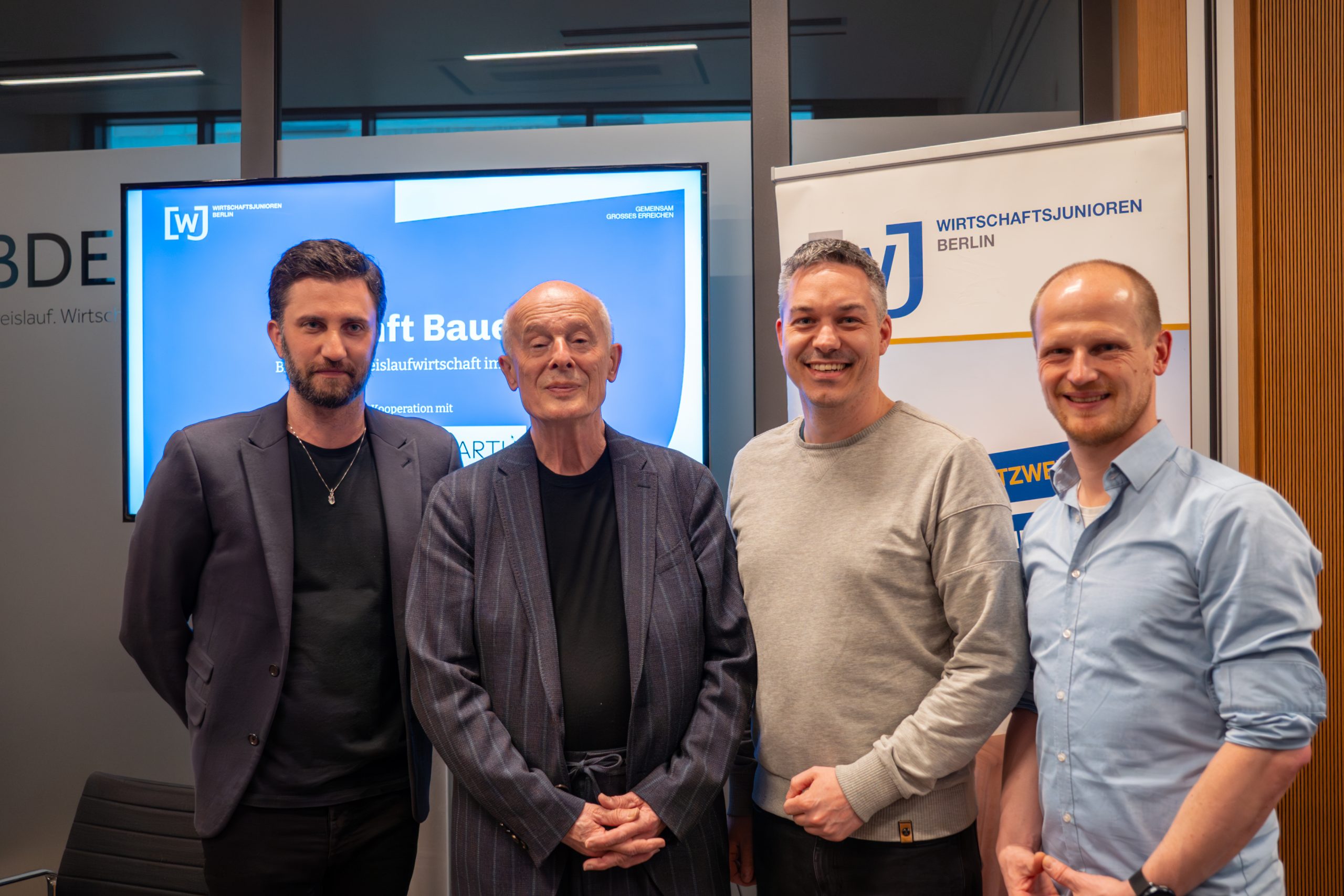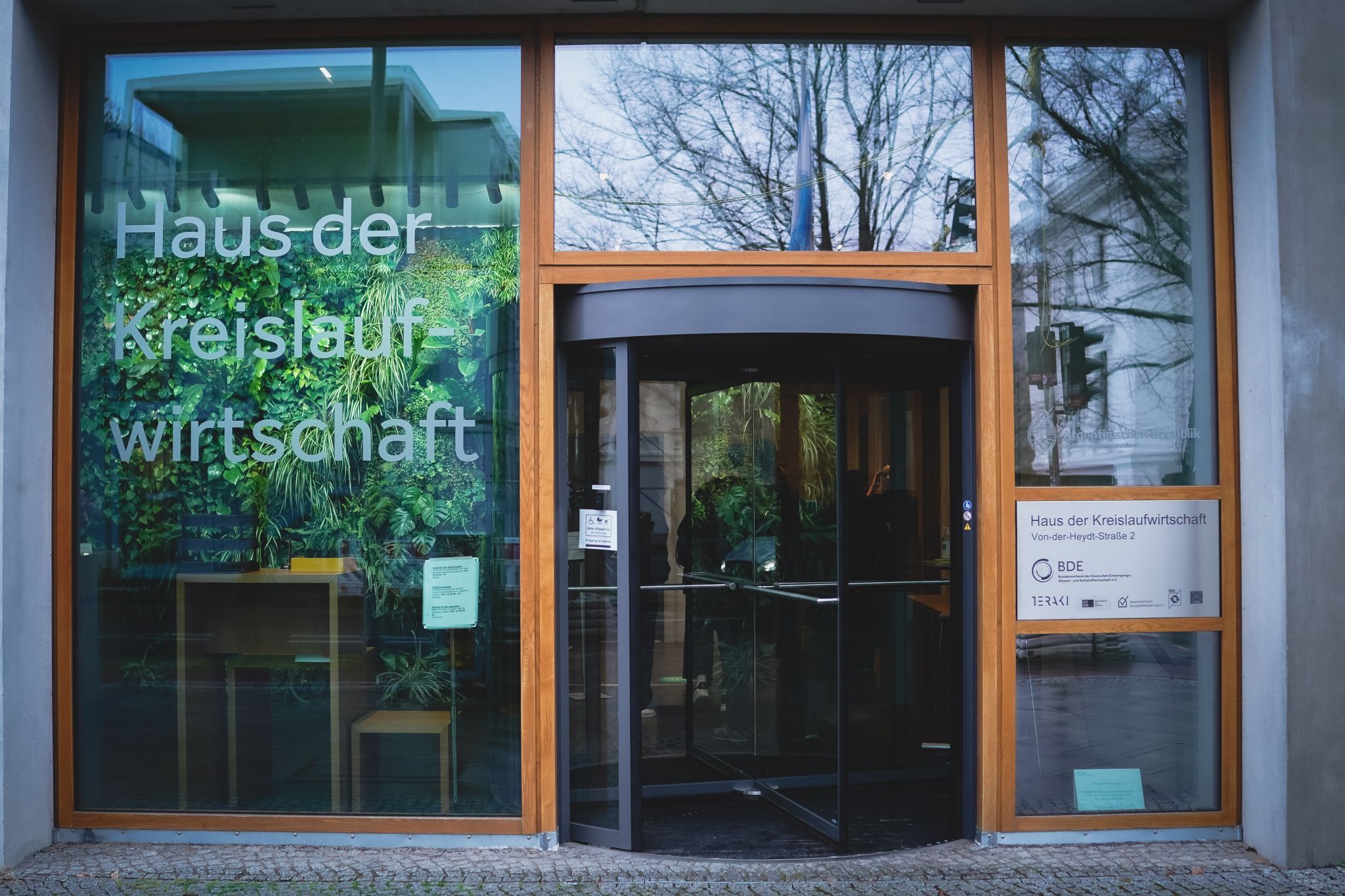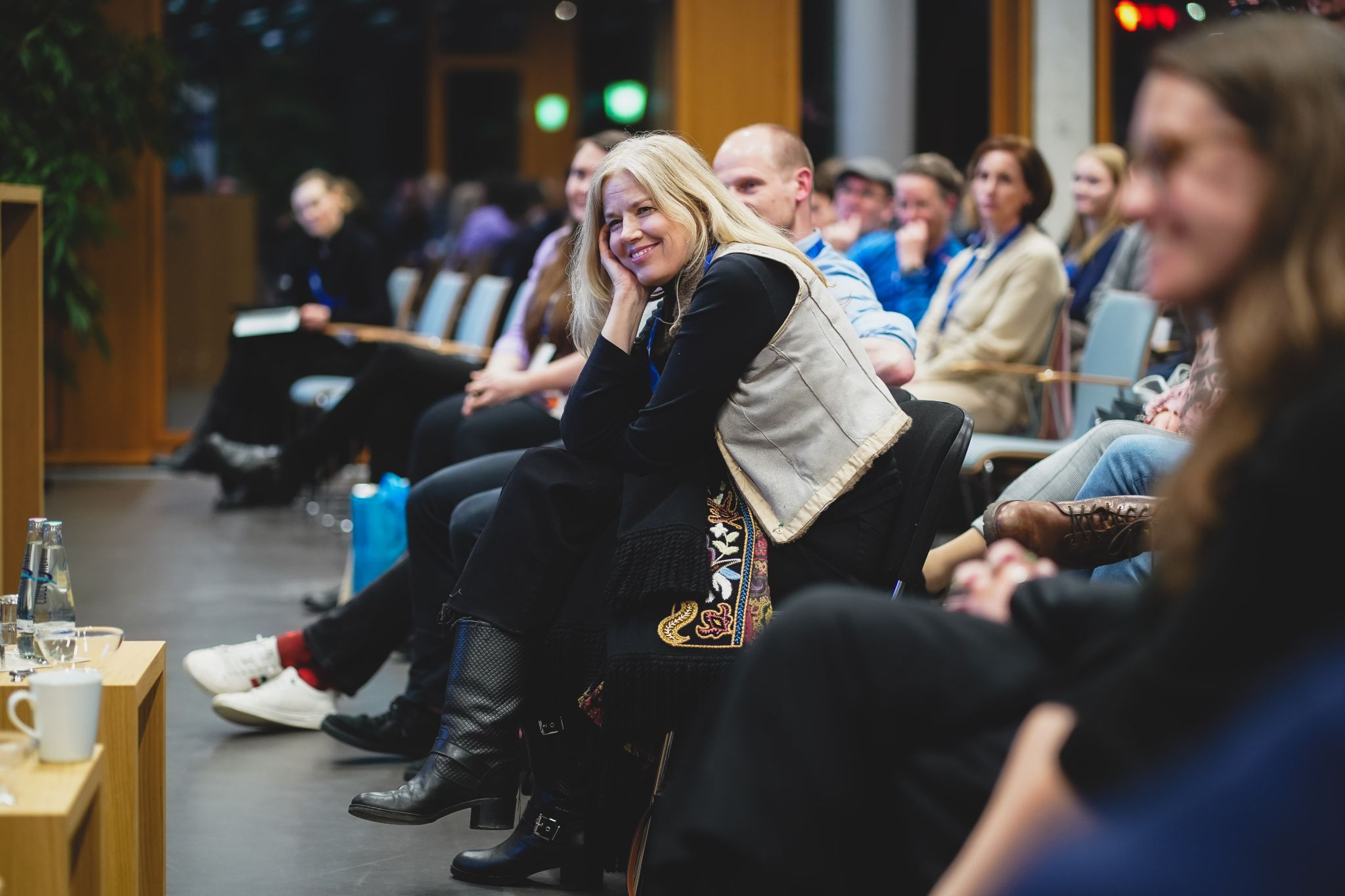As Chairman of the Berlin chapter of Wirtschaftsjunioren, I recently had the privilege of opening an evening that fundamentally challenged how we think about building our cities — and our future. The event, “Zukunft Bauen” (Building the Future), hosted in cooperation with Bauhaus Earth and the Berlin Chamber of Industry and Commerce (IHK Berlin), was more than just a panel or a networking evening. Held in the House of Circular Economy (Haus der Kreislaufwirtschaft), it marked a turning point: a moment where we moved beyond talking about sustainability and began to actively shape it.

At the center of this evening stood one of the most respected voices in global climate science: Prof. Dr. Dr. Hans Joachim Schellnhuber. As founder of the Potsdam Institute for Climate Impact Research (PIK), director general of the International Institute for Applied Systems Analysis (IIASA) and co-founder of Bauhaus Earth, his message was clear, sobering, and urgent. If we continue on our current trajectory — business as usual — we may be heading toward a 3°C temperature rise by the end of this century. This is not a minor fluctuation. At 2.7°C of warming, it’s projected that up to one-third of the world’s population may be forced to leave their homes. This is not just about future generations. It’s about the global displacement of billions — in our lifetime.

And here’s the shocking truth: the construction industry is responsible for a staggering 40% of global greenhouse gas emissions. If we are serious about limiting climate change, we must go beyond reducing emissions. We need negative emissions. That means our buildings — their materials, designs, and life cycles — must not only be less harmful; they must become part of the solution.
That idea was at the heart of a powerful message shared by Dominik Campanella, founder and CEO of Concular. His vision is clear: every decision we make in construction today directly shapes the climate of tomorrow. Reusing materials, repurposing existing buildings, and embracing circular design principles can not only reduce emissions but often unlock more creative, cost-effective, and resilient solutions.
Wood, for example, is emerging as a potential hero in this story. As a renewable material that actively binds CO₂, timber construction holds incredible promise. And yet, as Sven Carstensen of bulwiengesa pointed out, only 2.6% of current building projects in Germany use wood or hybrid materials. The gap between what is possible and what is practiced remains dangerously wide.
Architect Margit Sichrovsky, co-founder of LXSY ARCHITEKTEN, brought another critical layer to the conversation: the mindset shift from consumption to sufficiency. She called for architecture that works with what already exists — prioritizing preservation, local resources, and regenerative materials. In a world of shrinking resources and growing environmental crises, her call to “build with what we have” couldn’t be more timely.

One of the moments that stayed with me most was Dominik’s story of helping develop a DIN standard — not for profit, but out of a sense of responsibility. It was a reminder that meaningful change often starts not with policies, but with people. It takes imagination, courage, and above all, the willingness to act.
That night, we stood at the intersection of science and business — and became aware of the profound influence we carry. The question is no longer whether we have time to act. We don’t. But the energy and ideas exchanged that evening filled me with hope. We, as Wirtschaftsjunioren and as business leaders, can be a driving force for transformation.
The knowledge is there. The technology exists. What we lack is not capability, but commitment. Change will not come from passive hope, but from courageous leadership, collective will, and consistent action.
To anyone reading this: I invite you to be part of this movement. Support innovative startups. Challenge your industry norms. Share the urgency of this mission in conversations with friends, colleagues, and clients. Every conversation plants a seed. Every decision moves us forward. Together, we can reshape not only the construction industry — but the future we all share.







